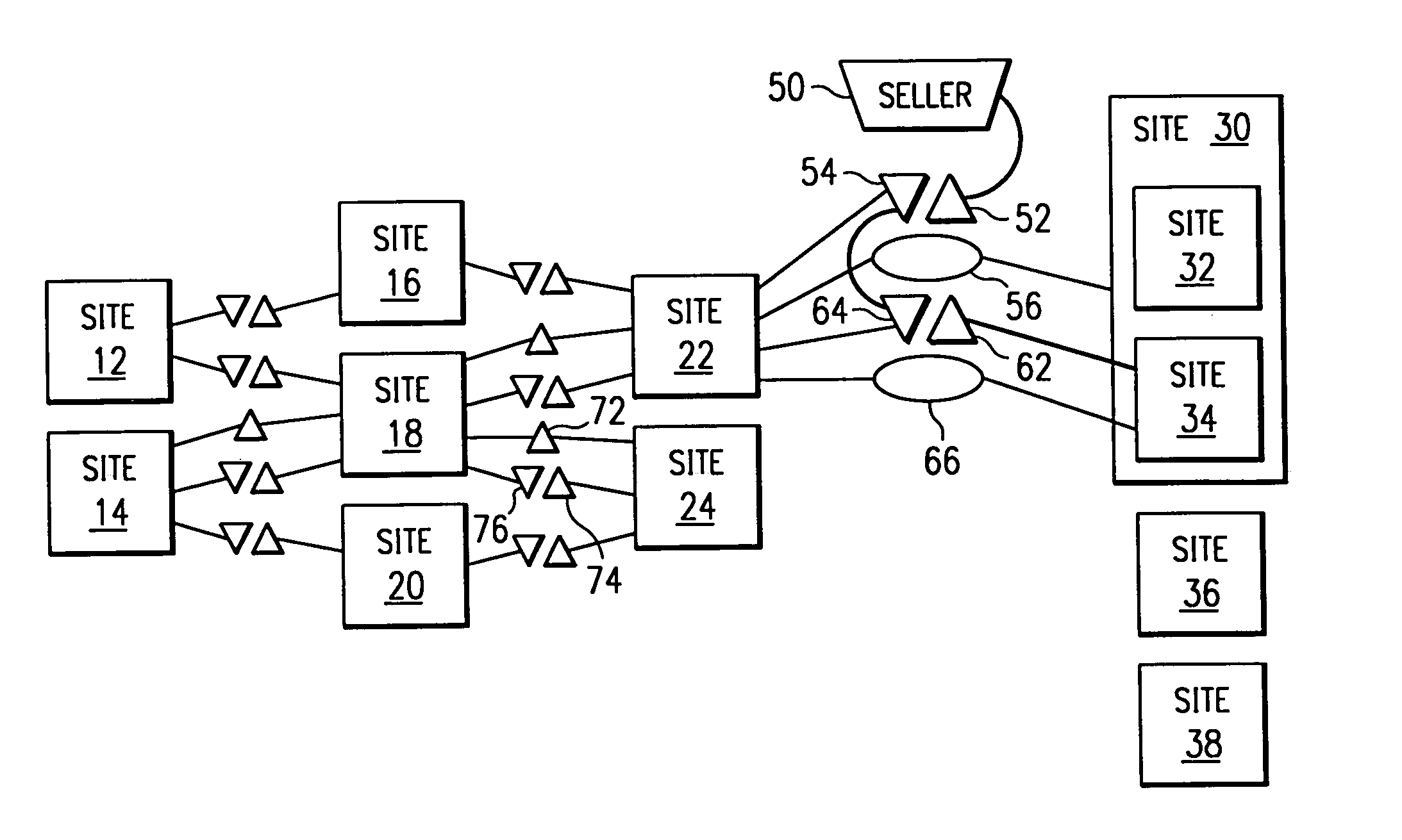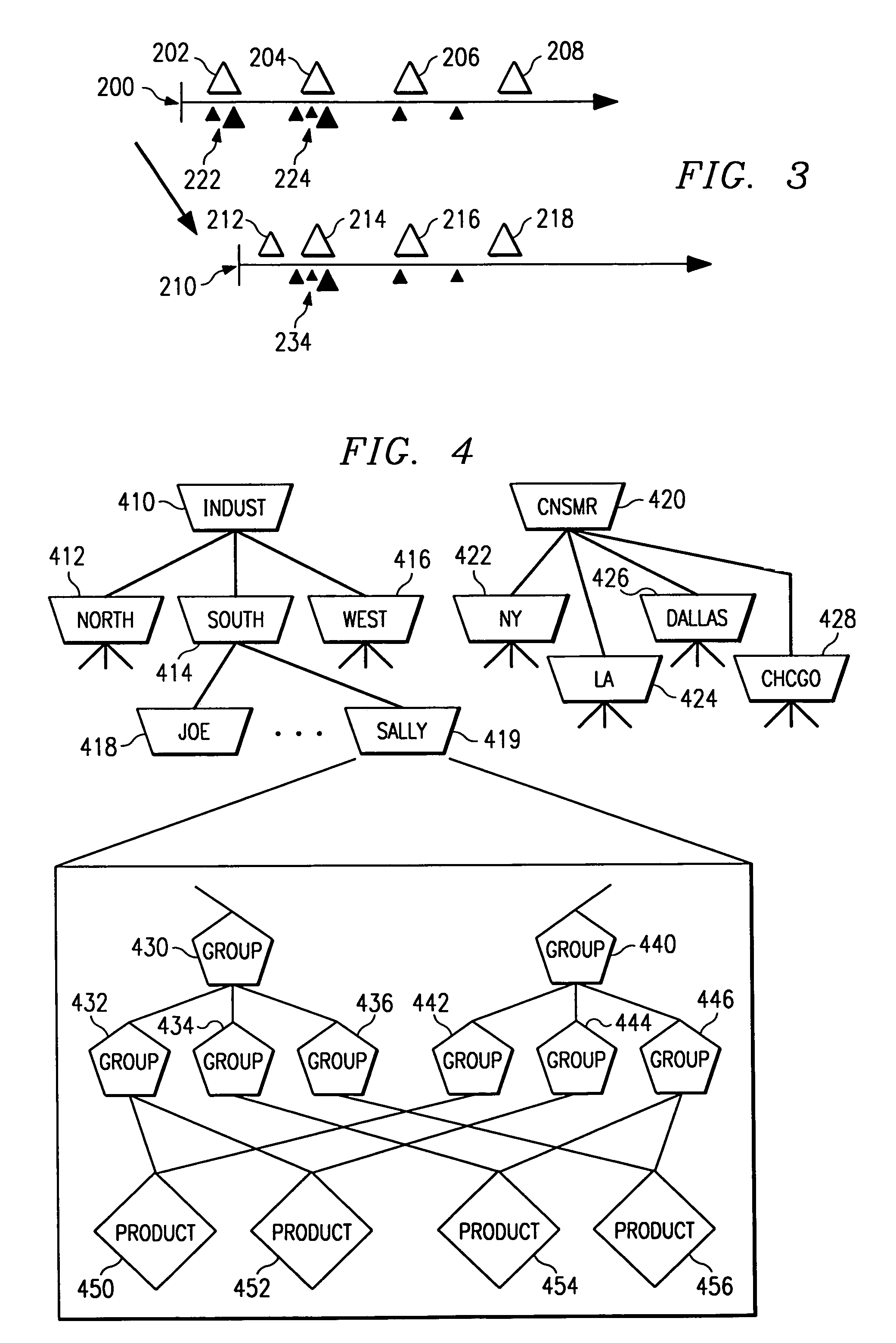System and method for allocating manufactured products to sellers
a technology for allocating manufactured products and sellers, applied in the field of supply chain management, demand management, capacity management, configuretoorder processes, etc., can solve the problems of manufacturing and distribution facilities with limited resources (capacity) and limited inventories (materials), manufacturers may not be able to meet every customer request, and manufacturers may not be able to meet a particular customer request. to achieve the effect of reducing disadvantages and problems
- Summary
- Abstract
- Description
- Claims
- Application Information
AI Technical Summary
Benefits of technology
Problems solved by technology
Method used
Image
Examples
Embodiment Construction
The Supply Chain, Site, and Seller Models
[0026]FIG. 1 is a block diagram of one embodiment of a supply chain model, including site models and seller models, and requests and promises between them. FIG. 1 provides an example supply chain. The supply chain model of FIG. 1 comprises twelve site models, 12, 14, 16, 18, 20, 22, 24, 30, 32, 34, 36, and 38. These site models represent organizational units that may have the capacity and materials to produce or consume items. Each site can place requests for items upon other sites. Requests are in general indicated in FIG. 1 by triangles 52, 62, 72, and 74. For each request 52, 62, 72, and 74, the site 12, 14, 16, 18, 20, 22, 24, 30, 32, 34, 36, or 38 being requested can make a promise to fulfill (wholly or partially) that request. Promises are in general indicated by inverted triangles 54, 64, and 76.
[0027]Other primary members of a supply chain model are seller models. The embodiment of a supply chain of FIG. 1 consists of a single seller ...
PUM
 Login to View More
Login to View More Abstract
Description
Claims
Application Information
 Login to View More
Login to View More - R&D
- Intellectual Property
- Life Sciences
- Materials
- Tech Scout
- Unparalleled Data Quality
- Higher Quality Content
- 60% Fewer Hallucinations
Browse by: Latest US Patents, China's latest patents, Technical Efficacy Thesaurus, Application Domain, Technology Topic, Popular Technical Reports.
© 2025 PatSnap. All rights reserved.Legal|Privacy policy|Modern Slavery Act Transparency Statement|Sitemap|About US| Contact US: help@patsnap.com



